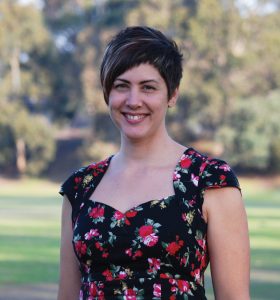 “If only I could play as well in front of others as I do when I’m practicing”.. a thought common to many musicians – amateurs and professionals alike. Have you imagined what it would be like to play well, without nerves? Or re-lived a bad performance experience in your mind’s eye? You have been tapping into your innate ability to image!Imagery is an amazing tool with which to address the difficulties of performing, including:
“If only I could play as well in front of others as I do when I’m practicing”.. a thought common to many musicians – amateurs and professionals alike. Have you imagined what it would be like to play well, without nerves? Or re-lived a bad performance experience in your mind’s eye? You have been tapping into your innate ability to image!Imagery is an amazing tool with which to address the difficulties of performing, including:
- the physiological effects of anxiety (i.e., increased heart rate and breathing, sweating, shaking/trembling, ‘butterflies’ in the stomach feelings),
- the psychological effects of anxiety (i.e., negative thoughts about the experience and one’s ability, decreased focus and concentration, and emotional responses), and
- the behavioural effects of anxiety (i.e., avoidance of performance situations, and using particular foods/ drinks/ substances to cope).
While practicing performing can be helpful, it will only help to decrease anxiety if the experiences are positive. To create positive performance experiences, performers need to address each of these areas that form a self-defeating cycle. These three areas can be explored through imagined scenarios first to bring about desired changes in real life.One of the five music therapy models recognised worldwide, the therapeutic method of Guided Imagery & Music (Bonny Method) combines relaxation and imagery techniques with the known benefits of music therapy, in a music psychotherapy setting. The method has been researched with music performance anxiety by the author (http://www.musicandimagery.org.au/video-anxiety-resolution.html) showing increases in performance confidence, enjoyment, and coping for the participants.
In Guided Imagery & Music sessions, people are taught how to create a state of relaxation through mindful breathing and the use of various relaxation and centreing exercises. They learn to become aware of where tension is held in their bodies, and to release the tension – either through physical or imagined means (e.g., imagining your muscles being warmed by a ball of light).
Once in a relaxed state, imagery can assist in exploring or uncovering negative thoughts and feelings. Specifically selected recorded music (generally of a ‘classical’ genre, matched to the mood and energy at the time) is played to sustain a series of spontaneously unfolding images that the performer relays to the therapist. This allows performers to develop and express images that reflect both their current feelings about performing and how they would like performing to be.
These images can provide new perspectives and opportunities for mental rehearsal. They produce physiological responses that are embodied and then can be drawn on in practice and performance situations to aid physical and mental control. Through mentally rehearsing new positive thoughts and actions, performers can experience increased performance quality and confidence without having to “try harder”, while re-connecting to their enjoyment of playing music.
Working with a qualified Guided Imagery & Music therapist allows the process to be tailored to the individual. Below are two examples of simple introductory exercises that can be easily incorporated into home practice:
Relaxation: Find your favourite way to enter a state of relaxation (whether that be through mindful breathing, progressive muscle relaxation, or simply scanning the body), by releasing areas of tension. Then pair this relaxation with listening to a quiet, slow piece of music and practice daily to enable entering a relaxed state quickly.
Visualisation: Remember a positive performance experience and imagine it in as much detail as possible. Include all your senses, e.g., visual images, sounds, and feelings in your body and spend a few minutes imagining this performance after practicing relaxation. After a couple of weeks, see if you can enter a relaxed state quickly by thinking of this image.
Rachael has a private practice in Melbourne working with performers and is available for in-person and skype consultations. She can be contacted at info@musicalkeys.com.au.
Further reading: a case study from Rachael’s thesis can be read in “Guided Imagery and Music and Music Imagery methods for Individual and Group Therapy” chapter 9, (2015). Jessica Kingsley Publishers (available online)
Martin, R. (2007). The effect of a series of Guided Music Imaging sessions on music performance anxiety. Unpublished Master of Music Thesis, University of Melbourne.
Rachael Martin A.MusA
M.Mus (Music Therapy), PGDip Guided Imagery & Music,
PGDip Music Therapy, B.Mus
